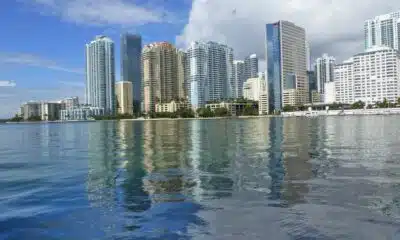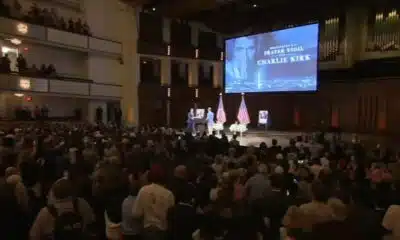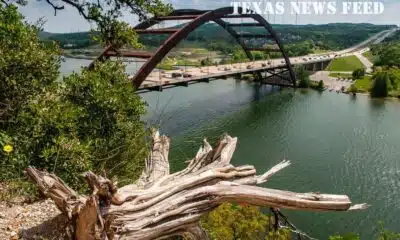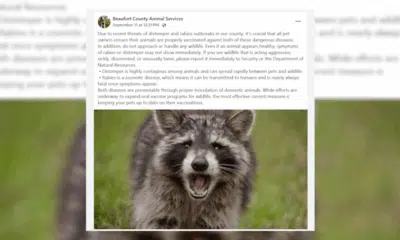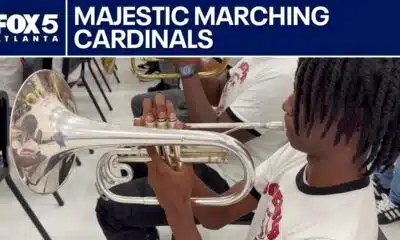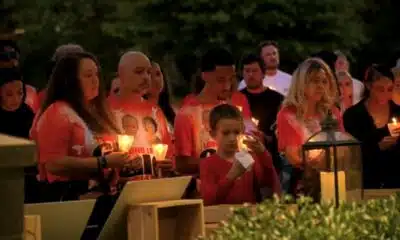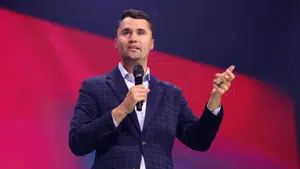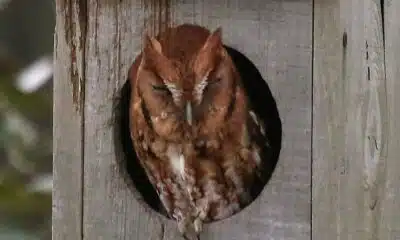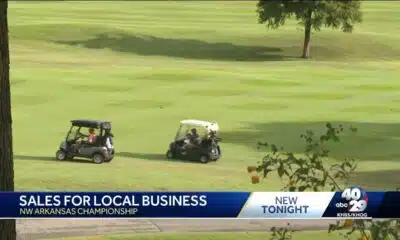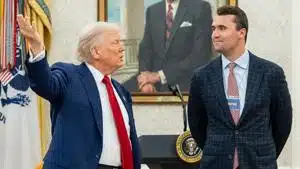News from the South - Virginia News Feed
Bills that change how localities can conserve trees amid development await Youngkin’s approval
Bills that change how localities can conserve trees amid development await Youngkin’s approval
by Evan Visconti, Virginia Mercury
March 10, 2025
Two bills were passed by the Virginia General Assembly this session that would give localities statewide access to more comprehensive laws regarding what happens to trees on land zoned for development. Gov. Glenn Youngkin must make a final decision on the fate of the measures by March 24.
All localities statewide were given the ability to adopt optional tree ordinances when a section was added to the code in 2022. This session, legislators worked to give the entire state access to slightly more robust, but still optional, regulations, in a style similar to those currently limited to certain localities.
How Virginia tree ordinances could be expanded
The current law allows only some localities within planning district eight in Northern Virginia to adopt slightly higher tree canopy replacement percentages after a piece of land is developed compared to the rest of the state. Tree canopy replacement requires that a certain percentage of each lot must contain trees 20 years after it is developed or redeveloped.
These select few localities can also create what’s called a “tree canopy fund” to collect and disburse fees from developers who cannot meet the tree canopy requirements of the ordinance.
“I think that a good thing here is we’re not making up something from scratch,” said Del. Rodney Willett, D-Henrico, chief patron of the bill that would allow localities statewide to establish a tree canopy fund. “The funds have been successful in that limited area.”
In Arlington and Fairfax Counties, fees that are collected from developers who cannot meet the tree canopy requirements are placed into designated tree canopy funds. The counties are then able use that money to plant and maintain trees or donate to nonprofits that plant trees.
Documenting and preserving Virginia’s largest, most revered trees
“It’s sort of a win-win,” said Ann Jurczyk, the Chesapeake Bay Foundation’s Virginia manager of urban restoration. “The development community likes it because it does give them more flexibility.”
Instead of having their hands tied when tree replacement requirements on a site cannot be met, developers can pay into the tree fund as an alternative.
The fund also provides localities “a way to get more trees into the ground,” Jurczyk said.
Del. Patrick Hope, D-Arlington, chief patron of the bill to increase tree canopy replacement percentages available to localities statewide, said his bill was also written with Northern Virginia in mind as a template for the rest of the state.
“You know what’s good for Arlington is good for everyone, and we do have a very high bar because we do love our trees in my locality,” Hope said. “Other localities love their trees too, and this will give them an extra tool to make sure that we can preserve our trees for the long term across the whole commonwealth.”
Hope emphasized that the tree ordinance would be entirely optional for localites and clarified that the bill “may not work for everybody, but in those localities that this is a really important thing to do, then you know I don’t see how the opposition could argue with everyone coming together to adopt this.”
Youngkin vetoed an identical bill from Hope last session despite the bill’s consensus support from land developers and environmental advocates alike.
“Maybe [Youngkin] didn’t quite understand that this bill is fully supported by all stakeholders,” said Hope.
Tree canopy conservation concerns
Representatives from the Chesapeake Bay Foundation as well as lobbyists for the Home Builders Association of Virginia and the Virginia Association for Commercial Real Estate all stood up to voice their support for Hope’s bill during a Senate Committee meeting this session.
According to Jurczyk, the fact the developers stood up to support the bill demonstrates how “watered down” it is.
Jurczyk voiced her concerns about what she called the “poison pill” that’s written into Virginia’s tree ordinances.
“No locality can ask for additional canopy than written in the code, and we’ve fought against that pretty much every year,” said Jurczyk.
For example, Hope’s bill would boost the maximum tree canopy that a locality can require to be conserved from 20% to 30% for certain residential sites zoned for development. The Chesapeake Bay Foundation would like that percentage to be the minimum that a locality can choose to require under the ordinance, not the maximum.
Setting a maximum tree canopy that localities can choose to require clashes head on with tree canopy goals being agreed to in parts of the state, said Jurczyk.
The Metropolitan Washington Council of Governments, which includes localities in northern Virginia, set a goal to maintain a minimum tree canopy coverage of 50% across the metropolitan Washington region.
Jurczyk wonders how a 50% goal can be met if localities are allowed to “remove acres upon acres of canopy” and “not replace it on a one-to-one basis or better.”
Hope said he would have liked the bill to be “a little bit stronger,” but added that “part of the deal is that when you work together with people you don’t always get what you want but you certainly do move the ball forward, and I think this is a good compromise where we landed, and I hope the governor signs it.”
Hope also urged developers “to please contact the governor’s office to make very clear to him that this is a really good proposal, and it’s a compromise piece which they’re very happy with.”
Andrew Clark, Vice President of Government Affairs at the Home Builders Association of Virginia, said he has not had any conversations with the governor’s office regarding the bill.
“Continuing to add to these statutes will, I think, create some administrative challenges for localities,” said Clark, adding that other states have written tree laws with “more streamlined, consolidated, almost user friendly approaches that create some predictability.”
“Virginia has really complex tree statutes, like really complex, and often it’s localities that are then adopting the ordinances and those ordinances are complex,” said Sarah Thomas, a contract lobbyist for the Virginia Association for Commercial Real Estate. “So Virginia is definitely a special place when it comes to tree law.”
“There probably is a simpler way to achieve the goal of preserving existing trees where possible and if not possible, mitigate the loss with the end goal of no net loss,” Jurczyk said.
Tree root zones survey bill axed
Del. Marty Martinez, D-Loudoun, was chief patron of a third local-option tree bill that would have required developers to survey for the critical root zones of existing trees on sites and submit their findings to the locality.
The Virginia Department of Forestry defines the critical root zone of a tree as the area encompassing all of the roots extending to the dripline of the tree, or the overall circumference of its canopy.
The bill failed in the Senate Agriculture Conservation and Natural Resources committee this session.
Clark and Thomas both stood up to oppose the bill during the Senate Committee meeting, their main reason being that the surveys would be too costly and time-consuming for developers.
Sen. Richard Stuart went a step further and said the bill makes it impossible to get affordable housing in Virginia, which is his “biggest priority.”
The Committee included a letter with their rejection of the bill requiring the stakeholders to get together and “try to hammer out something that’s going to be protective of the critical root zone,” said Jurczyk. “So we’ll come back next year with something we hope everybody can live with.”
YOU MAKE OUR WORK POSSIBLE.
Virginia Mercury is part of States Newsroom, a nonprofit news network supported by grants and a coalition of donors as a 501c(3) public charity. Virginia Mercury maintains editorial independence. Contact Editor Samantha Willis for questions: info@virginiamercury.com.
The post Bills that change how localities can conserve trees amid development await Youngkin’s approval appeared first on virginiamercury.com
News from the South - Virginia News Feed
Some employers take action against employees for social media comments on Charlie Kirk's death
SUMMARY: Following Charlie Kirk’s death, some Virginia employers have taken action against employees who made controversial social media comments. In healthcare and education sectors, individuals were placed on leave or terminated for remarks deemed unprofessional or supportive of violence. Riverside Walter Reed Hospital fired an anesthesiologist, and Newport News and Accomack County schools disciplined staff members. Experts highlight the blurred line between personal expression and professional conduct due to social media’s reach. William and Mary law professor Margaret Hugh emphasized that employment laws and at-will policies allow employers broad authority to act. She urges unity and respect amid heightened tensions.
Some Virginia employers are taking action against employees for social media comments made regarding Charlie Kirk’s death. A legal expert weighed in on where the line is drawn.
Subscribe: https://www.youtube.com/user/wvectv/?sub_confirmation=1
Download the 13News Now app: https://bit.ly/13NewsNowApp
Watch 13News Now+ for free on streaming: https://www.13newsnow.com/13NewsNowPlus
Check out our website: https://www.13newsnow.com/
Like us on Facebook: https://www.facebook.com/13newsnow/
Follow us on X/Twitter: https://x.com/13newsnow
Follow us on Instagram: https://www.instagram.com/13newsnow/
News from the South - Virginia News Feed
Area of interest forms in the Atlantic
SUMMARY: On September 11, 2025, Chief Meteorologist Tim Pandages reported on Hurricane Hub Live about tropical developments in the Atlantic and eastern Pacific. In the Atlantic, a low-chance area of interest near the Cabo Verde Islands may become Tropical Storm Gabrielle but requires favorable conditions. Recent tropical waves have struggled due to stable atmospheric conditions. Models show possible development east of the Leeward Islands with a likely recurving path away from Bermuda. In the eastern Pacific, Tropical Depression 13E has formed, expected to become Hurricane Mario, the season’s 8th hurricane. The Atlantic has had only one hurricane so far, Major Hurricane Aaron. Activity is expected to increase into October.
The newly formed area of interest could become Invest 92-L off the coast of Africa. Find out about that and more during tonight’s episode of Hurricane Hub LIVE! Livestream from Thursday, September 11, 2025.
Subscribe: https://www.youtube.com/user/wvectv/?sub_confirmation=1
Download the 13News Now app: https://bit.ly/13NewsNowApp
Watch 13News Now+ for free on streaming: https://www.13newsnow.com/13NewsNowPlus
Check out our website: https://www.13newsnow.com/
Like us on Facebook: https://www.facebook.com/13newsnow/
Follow us on X/Twitter: https://x.com/13newsnow
Follow us on Instagram: https://www.instagram.com/13newsnow/
News from the South - Virginia News Feed
Cat cafes, chromotherapy and pumpkin delivery: Here’s what’s new in RVA this September
SUMMARY: This September in RVA, Patch to Porch RVA delivers handpicked pumpkins from local farms, offering design, setup, and cleanup services for homes and events in Richmond, Henrico, and Chesterfield. Shore Pump introduces Beam Light Sauna, featuring infrared sauna and chromotherapy, promoting detox, skin renewal, and wellness with customizable sessions and memberships. The Fan now hosts River City’s first cat café, The Perfect Bean, combining a coffee bar with an adoptable cat lounge upstairs. Sourced locally, their drinks include seasonal, cat-themed specials. Cats come from Purring Hearts VA rescue, offering adoption opportunities, fostering community engagement and animal welfare.
What’s New in RVA is dedicated to informing you about the latest happenings in the Richmond area.
-
News from the South - North Carolina News Feed6 days ago
What we know about Charlie Kirk shooting suspect, how he was caught
-
Local News7 days ago
Russian drone incursion in Poland prompts NATO leaders to take stock of bigger threats
-
News from the South - North Carolina News Feed6 days ago
Federal hate crime charge sought in Charlotte stabbing | North Carolina
-
Local News Video7 days ago
Introducing our WXXV Student Athlete of the Week, St. Patrick’s Parker Talley!
-
The Center Square7 days ago
Weapon recovered as manhunt continues in Kirk assassination investigation | National
-
Our Mississippi Home5 days ago
Screech Owls – Small but Cute
-
News from the South - Arkansas News Feed6 days ago
NW Arkansas Championship expected to bring money to Rogers
-
News from the South - Tennessee News Feed7 days ago
Middle Tennessee State University dean filed over Kirk comments | Tennessee



